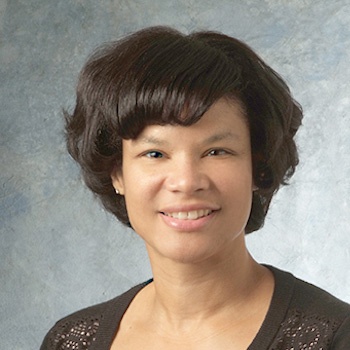The trailblazers in human, academic, scientific and religious freedom have always been in the minority… It will take such a small committed minority to work unrelentingly to win the uncommitted majority. Such a group may transform America’s greatest dilemma into her most glorious opportunity.
Background
LaShanda Korley is the Climo Associate Professor and principal investigator of the Korley Research Group at the Case School of Engineering. She earned a BS in chemistry and engineering from Clark Atlanta University and a BS in chemical engineering from the Georgia Institute of Technology. She earned her PhD in chemical engineering from MIT.
Interests
In her research, Korley focuses on bio-inspired approaches to material toughening and mechanical enhancement; influence of confinement on self-assembly and mechanical behavior; stimuli-responsive composites; interplay of non-covalent and covalent interactions; and new processing strategies for film and fiber applications.
The Korley Research Group is nicknamed the “M-cubed” Lab for its work to develop mechanically enhanced, multifunctional materials. These materials are inspired by natural substances, like the titin protein or spider silk, that have special strength or toughness or responsiveness to heat or light. Applications include protective fabrics, food packaging, scratch-resistant coatings, optical and mechanical sensors, and even drug-delivery and tissue-engineering scaffolds.
Sample Work
Publication
Toward a Tunable Fibrous Scaffold: Structural Development during Uniaxial Drawing of Coextruded Poly(caprolactone) Fibers
Jordan, A.M., Korley, L.T.J. “Toward a Tunable Fibrous Scaffold: Structural Development during Uniaxial Drawing of Coextruded Poly(caprolactone) Fibers”, Macromolecules, 2015, 48 (8), 2614–2627.
Publication
Biocompatible, biodegradable and porous liquid crystal elastomer scaffolds for spatial cell cultures
Sharma, A., Neshat, A., Mahnen, C.J., Nielsen, A.d.,Snyder, J.,Stankovich, T.L., Daum, B.G., LaSpina, E.M., Beltrano, G., Li, S., Park, B.-W., Clements, R.J., Freeman, E.J., Malcuit, C., McDonough, J.A., Korley, L.T.J, Hegmann, T., Hegmann, E. “Biocompatible, biodegradable and porous liquid crystal elastomer scaffolds for spatial cell cultures”, Macromolecular Bioscience 2015,15, 200–214. Highlighted in Materials Views, 10/24/14, Journal Back Cover.
Publication
Coarse-Grained Modeling of Peptidic/PDMS Triblock Morphology
Johnson, J.C., Korley, L.T.J., Tsige, M. “Coarse-Grained Modeling of Peptidic/PDMS Triblock Morphology”, The Journal of Physical Chemistry B, 2014, 118(47), 13718-13728.
Publication
Probing the interplay of ultraviolet crosslinking and non-covalent interactions in supramolecular elastomers
Monemian, S.; Jang, K-S.; Ghassemi, H.; Korley, L.T.J., Probing the interplay of ultraviolet crosslinking and non-covalent interactions in supramolecular elastomers, Macromolecules 2014, 47(16), 5633-5642.
